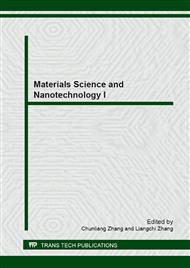p.3
p.8
p.13
p.18
p.22
p.27
p.32
p.36
Optimization of Organic Fibres%[Kevlar/Arobocel/Acrylic] in NAO Brake Pad Application and its Effect on Thermal Stability & Friction Characteristics
Abstract:
Organic fibres (Kevlar/ Arbocel / Acrylic) have good thermal stability, higher surface area and bulk density. The optimization of organic fibres percentage for thermal behaviour is considered using TGA. The temperature raise during brake application will be between 150-4000 C and this temperature zone is very critical to determine the fade characteristics during friction testing. Hence, three different friction composites are developed with the same formulation varying only the Kevlar, Arbocel and Acrylic fibres which are compensated by the inert filler namely the barites and are designated as NA01, NA02 and NA03 respectively. After the fabrication, the TGA test reveals that the composite NA03 has minimum weight loss. The friction coefficient test rig is then used to test the friction material as per SAE J661a standards. The results prove that the brake pad with minimum weight loss during TGA has higher friction stability. Thus, we can correlate the thermal stability with the stability of friction.
Info:
Periodical:
Pages:
8-12
Citation:
Online since:
December 2012
Authors:
Keywords:
Price:
Сopyright:
© 2013 Trans Tech Publications Ltd. All Rights Reserved
Share:
Citation:


